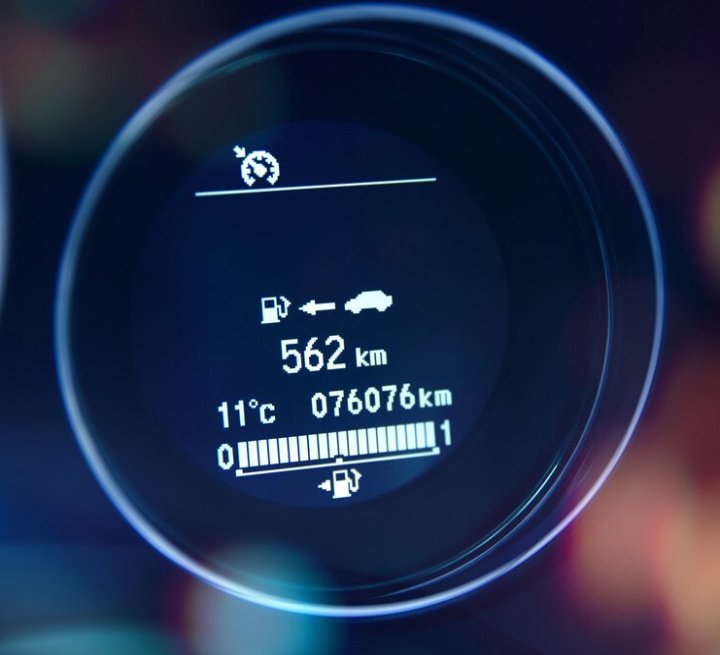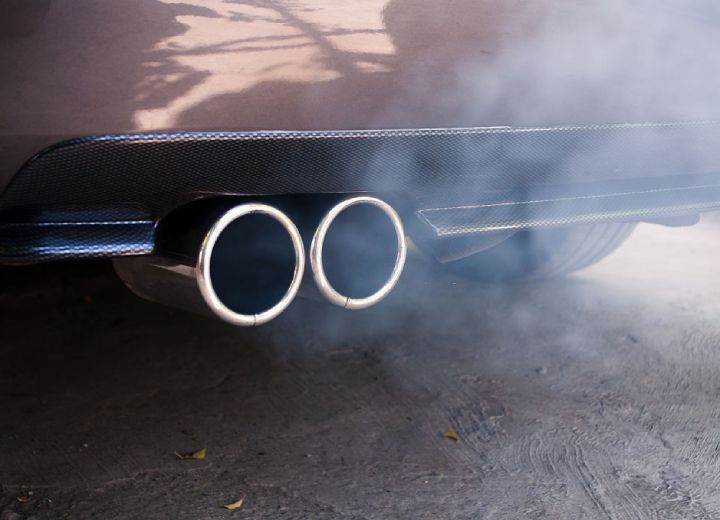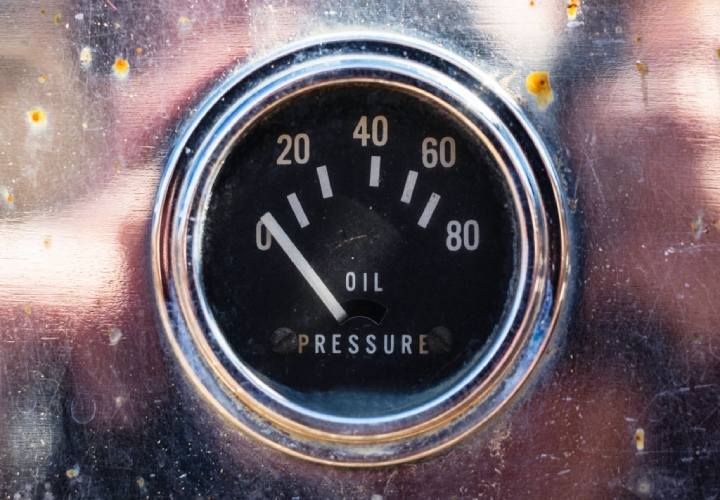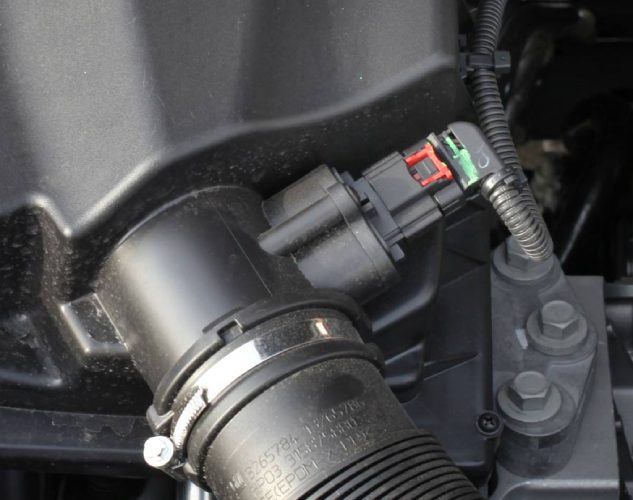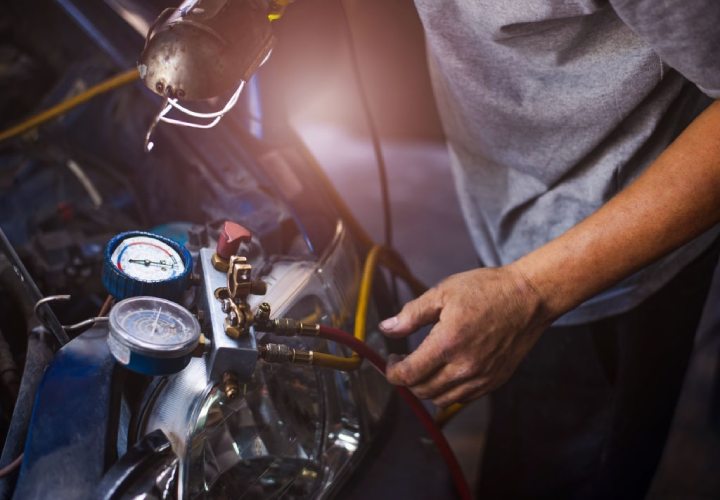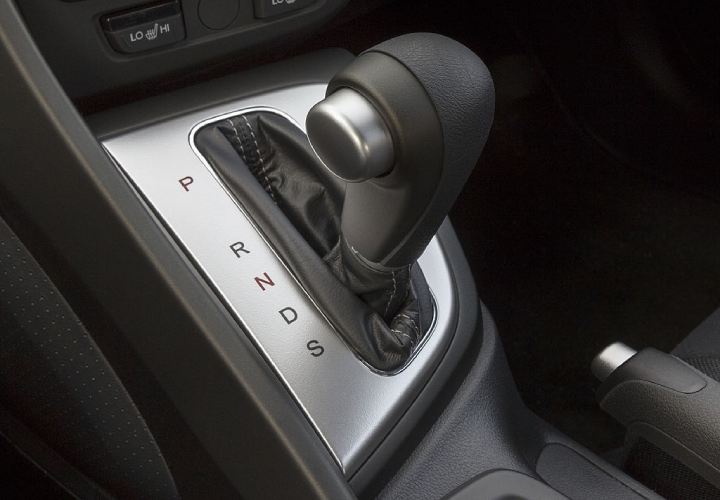We all love that morning moment when it’s cold outside, and we jump into the car to leave for work and turn on the heater. But what can you do when the car heater stops working as expected?
A common failure of the HVAC system on a car is blowing hot air only when accelerating. Whenever the car is idling, the car will blow cold air.
Why is my car heater only working when accelerating?
If your heat only works when driving the car, you should check the coolant level in your radiator and reservoir, as well as bleed the system of any trapped air. Other possible causes include a blocked heater core, a failing heater valve, or a stuck open thermostat.
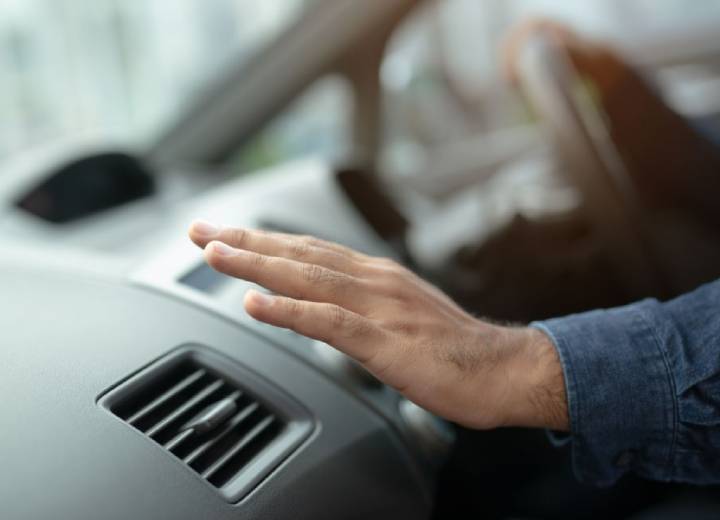
1. Low coolant
A low coolant level is the most frequent issue I find on cars that have problems with the heating system.
To prevent engine damage, manufacturers design their cars to allow coolant to retreat from the heater core into the engine jackets whenever the coolant level drops. As a result, the coolant might not make it to the heater core anymore, causing your heating system to stop working properly.
Whenever you encounter this problem, it is important to get it investigated as soon as possible If the coolant level drops too much, it can cause your engine to overheat and further damage.
How to check coolant level?
To check your coolant level, you don’t need any tools. However, it is important not to open the filler cap unless your engine is cold. If the engine is hot, you risk getting burned from the pressurized hot water from within the system.
Identify where your expansion tank is and open the filler cap. If you are not sure of the exact location or how it should look like, your vehicle handbook will tell you.
Inside or on the side of the tank, you will see two markings – min & max. Your coolant level should be within this range. If the level is lower than the recommended limit, you should top it up.
You need to ensure you are using the right antifreeze. To find out, please refer to the owner’s manual.
If your coolant level keeps dropping, you should take your car to a mechanic for an inspection. The coolant level should stay the same.
2. Air trapped in the cooling system
Common signs of air trapped in the cooling system include engine overheating and problems with your heating system. Coolant will either get stuck or flow slower through the system as a result of air pockets.
There are various ways air can get trapped inside.
Cracked hose – As the vehicle ages, hoses are prone to damage. Any hose that is part of your cooling system can develop small cracks, allowing coolant to leak and air to get inside the system.
Worn head gasket – A damaged head gasket will not seal the cylinder head properly, allowing air to get in.
Faulty radiator cap – the radiator cap needs proper sealing. Otherwise, the coolant system won’t pressurize correctly, and air can get in the system.
Incorrect coolant refill/flush procedure – If you are lucky, this is what caused air to get trapped inside. It won’t cost too much and can be fixed with a system bleed and a refill. If you are not sure how to properly bleed and refill your coolant, it is better to have it done by a professional.
If you know how to bleed the coolant system yourself, and after doing so, you are still experiencing the same problem, I recommend getting the car to a mechanic for a proper inspection.
Bleeding your coolant system will start at around $150 for parts and labor.
3. Clogged heater core
If the heater core in your car is partially or fully blocked, you will notice how the car will struggle to produce any heat. The core is a small radiator, with tubes that coolant passes through and tiny fins allowing the air to pass through.
Whenever those fins get clogged, you will notice a difference in the airflow coming from the vents. However, if you notice any weird smell inside the cabin, there might be a leak around the heater core.
A leak will result in low coolant levels, which I discussed above.
Replacing a faulty heater core will not come cheap, as prices start around $500 and can go up to $1,000 or more. However, sometimes the heater core can be repaired. For proper diagnosis, I recommend having a mechanic check your car.
4. Failing heater control valve
The heater control valve allows coolant to flow from the car engine to the heater core, so you can have heating when needed. When you turn off the heating, the valve will close, stopping the warm coolant get into the heater core.
A failing heater control valve will result in all sorts of issues with the heating system. Some of these include:
Inconsistent heating – a failing heater control valve might result in heating working only at certain times, like when the car is accelerating or idling. You might also notice quick fluctuations in your engine temperature if you check the temperature gauge.
Leaks – due to wear and tear, the valve might develop small cracks, leaking coolant. Unfortunately, you can’t repair the heating control valve, and a replacement will be needed.
If the valve gets stuck, heating not working at all might restrict the coolant flow from getting to the heater core. As a result, the heater core will not be able to produce any heat.
The cost of replacing the heater control valve will range from $200 to $250 for parts and labor.
5. Stuck open thermostat
In a car, the thermostat is responsible for maintaining the correct engine temperature by allowing or restricting the coolant flow to the engine. However, as with other car parts, they are prone to failure.
A stuck open thermostat will present the following symptoms:
Engine not getting to the optimum temperature – when driving, you will notice that the engine will get to the optimum running temperature after a couple of minutes. If the thermostat is stuck open, coolant will keep flowing to the engine, preventing it from reaching the correct temperature.
No heating – following up on the previous symptom, if the engine cannot reach the optimum running temperature, the heater core will not get warm enough to produce any heat.
Poor fuel economy – you could also notice a drop in your MPG if the engine is running at lower temperatures.
A thermostat can also get stuck closed, causing your engine to overheat. It is important always to check your temperature gauge and ensure the engine is running at the optimum temperature. If you are not sure how hot your engine should run, you should check the vehicle handbook.
The cost of replacing a car thermostat will start at $200 and go up to $350, depending on the make and model. I always recommend having your parts replaced by a certified car technician.
How does the heating system work in a car?
Your car’s heating system consists of five components:
- Heater core
- Blower fan
- Heater control valve
- Heater hoses
- Control panel found inside the car
As your engine is running, it will produce heat that needs to go somewhere. Part of it will go out through the exhaust, while the rest will get transferred to the coolant. When the engine reaches its optimum operating temperature, the thermostat will open and allow the coolant to circulate through the engine and radiator, removing the heat.
From the radiator, coolant will also flow to the heater core, which will eventually heat up. In front of the heater core is a blower motor, which will blow air through the vents. The speed of the blower can be controlled from inside the cabin, from your HVAC control panel.
How often should I inspect my car’s heating system?
Most of my customers who come to the garage with heating issues have never checked their heating system before. I recommend checking that your car heating is working at the end of each summer.
You should:
- Turn on the heating in the morning and see how long it takes to warm up
- Check coolant levels and for any possible leaks underneath the car
- Pay attention to temperature gauge and how long it takes to reach regular temperature
- Be aware of any coolant smell when heating is on
Can I drive the car if the heating is not working?
As you can see, there are multiple reasons for a car’s heater to stop working. While some might not affect the actual driving, others, such as a low coolant level, might result in engine overheating and possible damage. I recommend whenever there is an issue with the car to have it fixed as soon as possible.
Resources
How It Works: Your car’s heating system
My name is Jeffrey Williams and I have been a car mechanic for over 35 years. I am currently working NYC Auto Repair Shop, in New York City and recently developed a strong passion about blogging. I decided to put together this blog where I will try and answer the most commonly asked questions I get on a daily basis from my customers.

